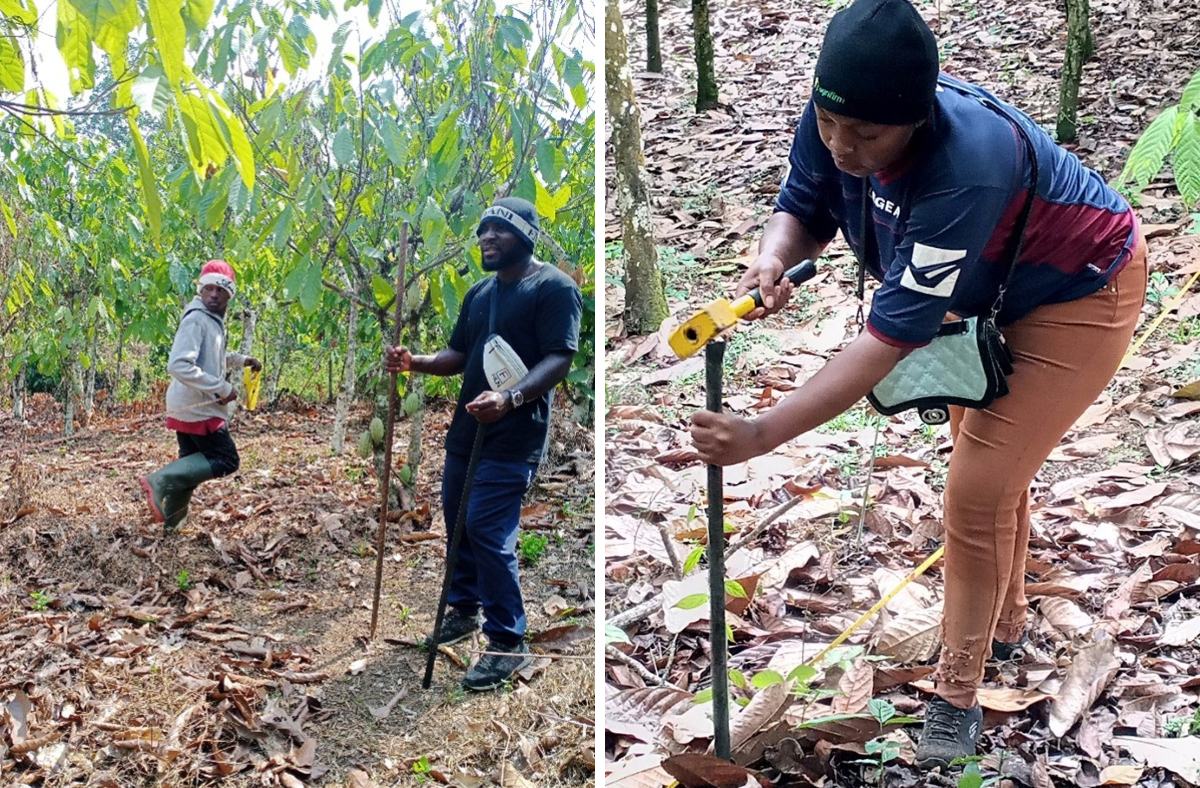A series of exercises and workshops were organized among researchers, farmers, and other stakeholders in the Ntui ALL.
The results of the workshops presented three key challenges in the Ntui LL namely: (i) Pests, and diseases, (ii) poor shade management, and (iii) nutrient deficiency. It was resolved that the first two challenges will be tackled jointly because they are highly related. Following these results, two experimental designs have been developed to test foliar fertilizer efficiency, and biopesticide efficiency respectively. The experiment on foliar fertilizer efficiency requires 12 experimental plots including 08 plots for the baby trials and 04 plots for the mother trials. Mother trials are simply marked by more complex measurements. Meanwhile, the second experiment (biopesticide efficiency) requires 03 experimental plots, making a total of 15 experimental plots. The plots were selected to represent the agroecological diversity of the Ntui LL showing the forest, savannah, and the forest-savannah transition zone.
Foliar fertilizer is a product of high adoption by farmers in Ntui LL and there is no clarity on its impact on yield. Therefore, the results of this experiment will be of great interest to farmers and the research communities. The results of the trials will tell whether foliar fertilizer application is profitable thereby providing reliable information to encourage the use of foliar fertilizers at the correct dosage. For this experiment, transects of 45 m x 29 m have been delineated with 03 transects in each mother trial and one transect in each baby trial. The transects were then subdivided into two blocks of 45 m x 12 m and separated by 5 m distances. The two blocks constitute the two treatments including “No foliar fertilizer application” which is the positive control (PC) and “Foliar fertilizer application”.
The trial with biopesticide involves the test for Beauveria (B) and Trichoderma (T) to fight mirids and black rot disease respectively which are perceived as the most critical challenges for cocoa farming in the Ntui LL. Therefore, this experiment aims to evaluate the yield and economic impact of replacing the current pesticide with Beauveria for the control of mirids and Trichoderma for black pod rot. In each of the three selected farms, three units (20 m x 20 m) of Biopesticide (B + T) and three units of positive control (PC) were delineated. A biopesticide test was put together with the PC and separated by 5 m apart. Therefore, in each farm, there’s a total of six plots with 3 repetitions per treatment.
The data to be collected include viability test of biopesticide, compatibility analysis for Beauveria and Trichoderma, Shade/ Canopy microclimate, plot delineation, initial site characterization, socioeconomic variables, cocoa pruning, weeding, sanitary pruning, labor cost, diseases, pests, foliar fertilization, etc. These different parameters to be measured are still under review by experts.



